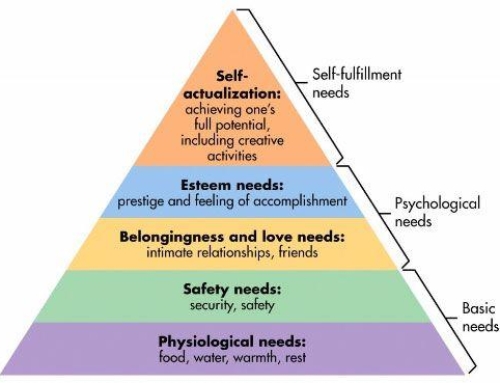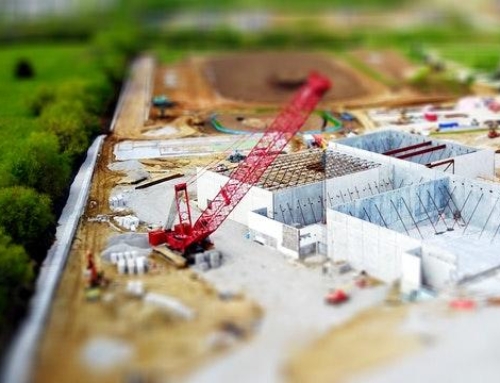Thinking of renting/buying a condo/house in a new (or nearly new) building? You’re loving the fact that the building looks so shiny and modern, so this minute with big windows, wood floors and eco-friendly features.
But tread carefully. New does not mean trouble-free. Those windows, floors, and green add ons may be exactly what will cause big (and hugely expensive) problems once you and the other owners in your building have settled in. Many of the problems with new construction can be traced back to issues of time and/or money—using inferior products or taking shortcuts during the building process.
Robert Braverman, a real estate attorney at Manhattan-based Braverman Greenspun is seeing a “steady flow of cases” connected to recent construction. He says he is representing the residents of “at least 15 or 16 buildings to deal with construction defect claims in new buildings.”
Those lawsuits are an important warning to potential buyers, because one way to avoid buying into a building with construction problems is to do some pre-emptive research and find out whether the developer has any pending litigation for construction defects.
“This would be a red flag for any buyer for a number of reasons,” says Braverman. “If your building winds up with substantial defects that the developer won’t fix, you could face assessments for both the repairs and a six-figure lawsuit against the developer.”
Your property values can also take a hit when a building is engaged in protracted litigation, Braverman says, and a lawsuit can create substantial financing difficulties for owners wanting to sell.
Ivan Mrakovcic, forensic team leader at Rand Engineering & Architecture, says that sometimes when developers run into money problems, they may feel the need to rush and cut corners.
“Our forensics team has a steady work flow reviewing buildings, looking for systematic defects and issues, helping condo or co-op boards to understand their options for repair or restitution,” he says.
If you’re thinking that your homeowner’s insurance policy will cover any issues that may come up, think again.
“Insurance policies do not cover faulty workmanship/construction,” says Jeff Schneider of Gotham Brokerage (a Brick sponsor). A fire or broken pipe caused by poor workmanship may be covered, he says. “But, if you are aware of a condition that needs to be remediated and don’t take action until there is an incident, you might lose your coverage,”
But, the news isn’t all bleak. Jon Colatrella, executive director of Howard L. Zimmerman Architects, is optimstic about the state of new construction in NYC today. He says the Department of Buildings has put a bigger focus on inspections by third party agencies. “While this has not solved all of the new construction defects, it has certainly reduced the amount of latent defects,” he says.
Larger developers are also making greater use of “third party architects and engineers to perform peer reviews of the construction drawings” as a building progresses,” he says. It’s an improvement over the last construction boom “when developers relied solely on the general contractor for quality control oversight, he says. A situation he compared to a “fox guarding the henhouse.”
To avoid buying into a building with problems, check out this list of things to look out for with new and nearly new construction.
1) Leaks in the facade and windows
More daring building designs means a greater change of window and facade problems, says Braverman.
“Many of the construction defect cases I handle involve complex curtain wall systems that, while aesthetically pleasing with their sleek look and over-sized windows, are comprised of thousands of components,” he says. “All you need is for a few of these pieces to fail because the piece itself is defective or improperly installed, and you could have a serious water infiltration issue which is often difficult to identify and repair.”
Colatrella agrees that facade leaks are more prevalent now thanks to increased demand for metal and glass curtain wall systems. “These take a different level of skill and care to construct,” he says.
If you’re moving into a brand new building, the last thing on your mind might be taking care of your new windows. But they need regular maintenance in order to work properly.
“The seals and gaskets need to be cleaned at least once a year, otherwise they will develop drafts and leaks,” according to Mrakovcic. “All window seals should be thoroughly vacuumed post-construction to remove any debris that might have settled there.”
He says many residents jump to the conclusion that their windows are faulty. Sometimes they’re right, but not always: “Some window systems are better than others, all are designed to allow a finite amount of air transfer.”
2) Wood floor problems
Colatrella says that problems with wood flooring are typically due to inferior materials and/or not letting the material acclimate to the building before installation.
That’s because natural wood expands and contracts over time. If it’s put down when damp, gaps can develop.
Small gaps the thickness of a dime are not a concern, but gaps as thick as a quarter may be. Engineered wooden floors—floors with a veneer of wood over composite—may be subject to warping from moisture or, in a worst case scenario, mold.
Often facade leaks are what make floors warp and you’ll see the results of the leak on the floor before you’ll see it on the ceiling or walls.
3) Lack of fire prevention features
Colatrella says that “still one of the biggest defects that we see is related to firestopping and fire separation, despite the increase in layers of inspection.”
That means building might have inadequate fire-stopping seals around pipes and conduits, Mrakovcic says. “In addition to posing a safety risk, such deficiencies contribute to odor transfer between apartments.”
4) Ventilation/exhaust problems
This is often an issue in both the public areas of a building and in individual apartments. In common areas, a proper ventilation system may not exist at all or may not function properly. Anemometers are used to measure air flow in these areas.
New high rise buildings present a particular problem for ventilation/exhaust systems, called the “stack effect.” These buildings are sealed of from the outdoors and when their heating systems are in use, hot air rises through the hallways and creates negative pressure, in some cases pulling odors from one apartment to another, usually on the lower floors.
In extreme cases, the operation of the sliding elevator doors can be adversely affected, even stopping them from working altogether.
5) Inferior substitutions
Standard offering plans include a disclaimer that allows the developer to make changes that are of equal or better quality. Whether something is equal or better can be subjective and surveying engineers often find things aren’t quite as they were intended in the original plans for the building. Most substitutions are made simply because they are cheaper.
6) Problems with green technologies
Apparently, it’s not easy being green. Some green technologies that were meant to save energy and operating costs have not lived up to their promises by manufacturers, Colatrella says.
“More importantly, they have not been as reliable in everyday operation and have had more breakdowns than advertised which impacts cost savings a lot,” he says.
SOURCE: brickunderground.com





